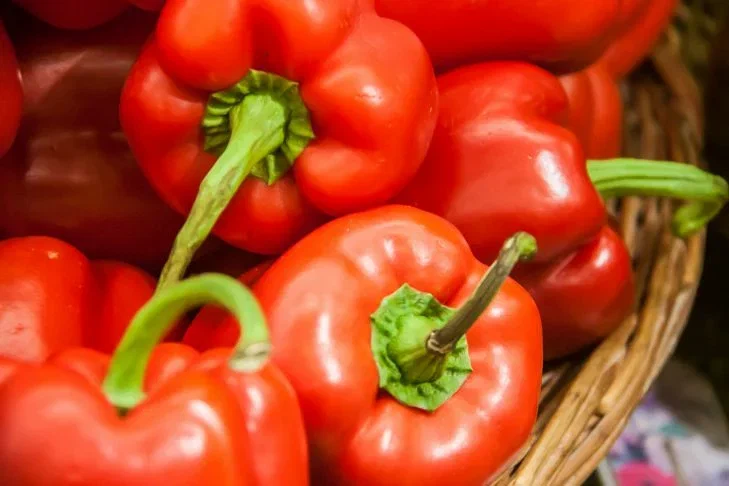How to Grow Sweet Peppers Properly: Common Mistakes
When growing sweet peppers, different gardeners will always have different yields not only in quality but also in quantity. Why? This is due to non-compliance with the conditions and requirements for growing this vegetable crop.
Therefore, in this article we propose to consider the most common mistakes made when growing sweet peppers.
Anastasia Kovrizhnykh , an expert of the online publication "BelNovosti", an agronomist and landscape designer, spoke about growing bell peppers.
Not enough light
If you plant sweet peppers in the shade, you should not count on a rich and high-quality harvest.
In the absence of light, the stems of the plant begin to stretch upward. It is recommended to plant red pepper seedlings in holes every 25 cm, with a distance of up to 50 cm between rows.

Early landing
You can plant seedlings in open ground only after the air temperature stays at +23 degrees for at least three days. If you plant peppers earlier, the bushes will have a delay in development, which will cause a shortfall in the harvest.
Lack of support
Established bushes can break under the weight of growing peppers or in heavy rain and wind.
This problem can be avoided by using supports to which the plant stems are tied. Tying up the bushes should be done simultaneously with the formation of the fruits.
Deep planting
It is important to know that the plant has a root collar, so there is no need to plant the bushes at a great depth.
The depth is determined individually and depends on the depth at which the plant grew in the nursery, and this is, as a rule, no more than 5 cm. Note that the less you deepen the bush, the better it will grow, and most importantly, it will be strong.
Transfer
Many people dig up the seedlings completely from the ground and then begin planting them.
Of course, we will not claim that the bush will not take root, but we will clarify that its development will be somewhat worse than if it is transplanted using the transshipment method. What does this mean? Planting is carried out with the soil in which the seedlings grew, while it is better to refuse picking.
Unfavorable conditions for growth
Many gardeners claim that peppers are not afraid of heat and moisture. This is not true, if the air temperature exceeds +35 degrees, the leaves will begin to curl, and then fall off. As for moisture, peppers like it, but in moderation. If you overdo it with watering, the existing ovaries and flowers will fall off, as if the watering is not complete.
Peppers should be watered frequently, but little by little; it is best to water after sunset.
Incorrect loosening of the soil
Despite the fact that the pepper root system is located at a depth of up to 5 cm, it is recommended to loosen the soil at least once a week. Loosening is performed to a depth of up to two centimeters. Deep loosening can cause damage to the root, which will lead to the rapid death of the plant.
Advice from experienced gardeners. When planting peppers, use pine needles, sawdust or straw, which are scattered over the planting area in a 7-10 cm layer before planting the peppers, after which the area is dug up. In such pre-prepared soil, the peppers will grow faster and it will be possible to minimize the need for loosening when growing peppers.
Additional soil fertilization
Sweet peppers grow best in well-fertilized soil. Fertilizers should be applied not only before planting seedlings, but after the bushes have formed.
To get a rich harvest, it is recommended to apply fertilizers with a high content of potassium and nitrogen to the open ground once every two weeks, phosphorus is excluded to a minimum. Fresh manure cannot be used as fertilizer, this will lead to a deterioration in the quality of the harvest.
If you follow the above tips and recommendations when growing sweet peppers, you are guaranteed to be able to consistently harvest a high-quality and rich crop from your plot.
Earlier we talked about why tomato seedlings turned purple.
